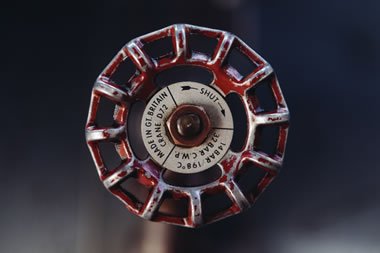Managing Burning & Scalding Risks from Hot Water & Hot Surfaces
 In this article (part 1 of 2) we consider the management of burning and scalding injuries from both hot water and hot surfaces. We’ll look at how hot is too hot, who is at risk and what we can do to manage these risks more effectively.
In this article (part 1 of 2) we consider the management of burning and scalding injuries from both hot water and hot surfaces. We’ll look at how hot is too hot, who is at risk and what we can do to manage these risks more effectively.
Water temperatures and scalding … who is at risk?
Hot water can scald anyone, but vulnerable people are particularly at risk of injury from this type of hazard. The older we get, the more vulnerable our skin becomes, and the risk of burns and scalding injuries is heightened. Additionally, people who are vulnerable – who may not understand the risks posed to them, for example – can also be at risk of scalds and burns.
Any source of water that is 44 degrees Celsius or above poses this increased risk to anyone who encounters it, and particularly to these groups of people. Children can also be included in this group.
What about hot surfaces?
The same applies where hot surfaces are concerned. The temperature that poses a risk here is akin to that of hot water, too – in this case, it is slightly lower at 43 degrees Celsius.
Pipework and radiators pose two of the biggest risks in this category. Indeed, they may be more dangerous in some instances. In care homes and similar settings, hot water sources would typically be restricted to bathrooms. However, hot water pipes and radiators would be present in most rooms, including those where residents are present and are sometimes on their own.
This article forms the first of a two-part series focusing on identifying the risks associated with hot water and surfaces, and how to manage those risks.
Managing the additional risk from Legionella
Legionella bacteria is yet another potential hazard that must be dealt with when hot and cold water systems are present. A legionella risk assessment should be performed that will identify where the risks are, and allow those in charge to manage those risks properly.
It is vital that whoever is placed in charge of this task is appropriately qualified to handle the job. Proper training will ensure the correct processes are followed, and that nothing is missed.
Legionella bacteria thrives in temperatures between 20 – 45 degrees Celsius, and while they cannot survive above 60 degrees Celsius, they can potentially lurk within a hot water system that is improperly handled and maintained. (Temperatures under 20 degrees Celsius cause the bacteria to fall dormant.)
How to identify and manage burn and scalding risks
A burning and scalding risk assessment will help you assess the potential risks posed to those who are under the care of the relevant social care setting. In addition to a legionella assessment, a general risk assessment can also be conducted for the property, and this can be used to influence a care assessment for an individual.
Identifying specific risk areas and learning how to reduce those risks will be addressed in the next portion of this series.
Further information, advice and support
If you require further information or advice about burns and scalding risks from hot water and hot surfaces call us today on 0330 223 36 86 or get in touch here … contact us
Further reading
For additional information about scalding … here >>


